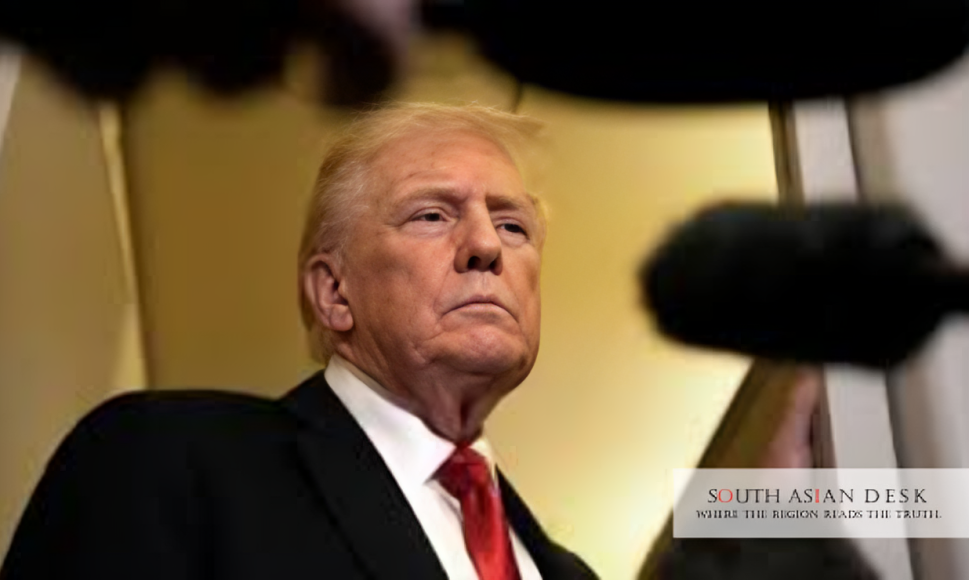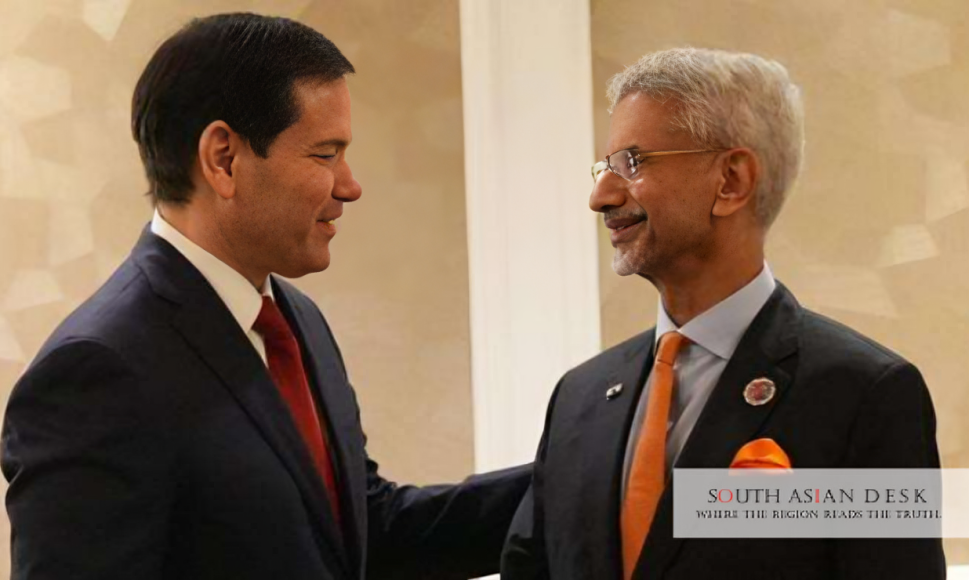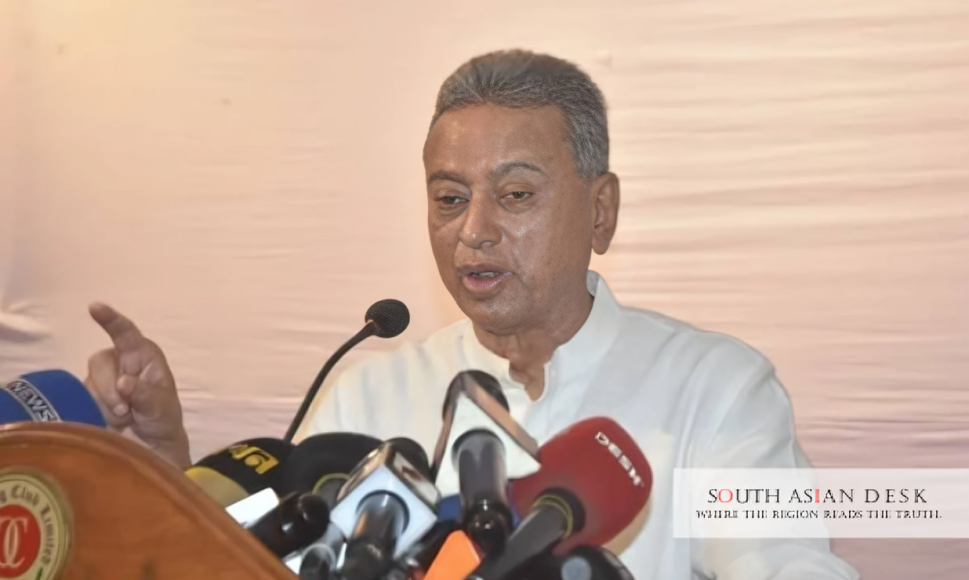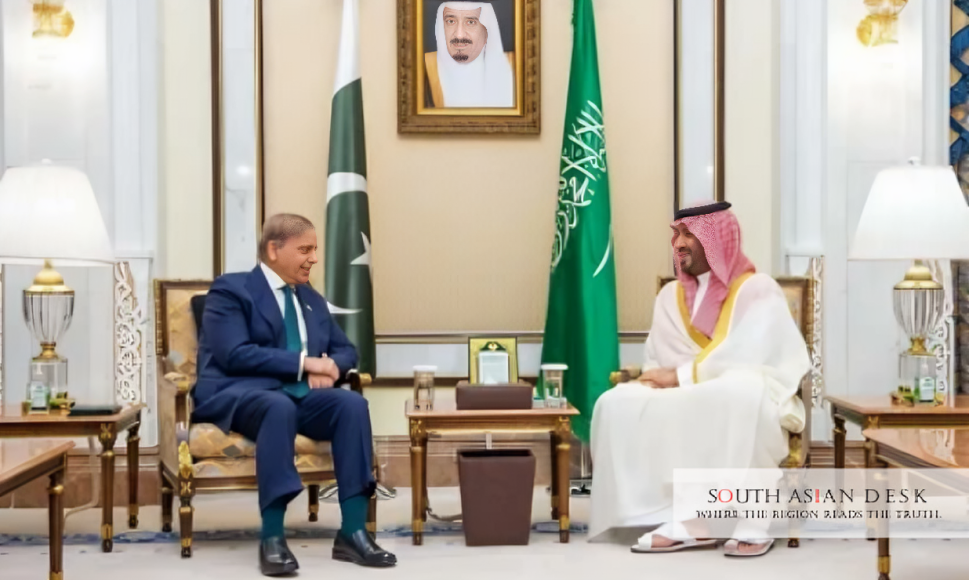US President Donald Trump has vowed to maintain massive tariffs on India over Russian oil imports. Speaking to reporters aboard Air Force One on Sunday, 19 October 2025, Trump claimed Indian Prime Minister Narendra Modi assured him that India would stop buying Russian oil. This comes amid ongoing trade talks where Russian oil purchases remain a key issue.
The story matters in South Asia as India’s reliance on discounted Russian oil supports affordable energy for its 1.4 billion population, but US tariffs could raise export costs for Indian goods, affecting regional economies tied to India’s trade. Any shift in energy sourcing might influence neighbours like Pakistan and Bangladesh, which monitor global oil dynamics.
Trump’s Claims and Tariffs
Trump vows India tariffs Russian oil remain in place unless imports stop. He stated that Modi gave him the Trump Modi Russian oil assurance during a conversation on Wednesday, 15 October 2025. “I spoke with Prime Minister Modi of India, and he said he’s not going to be doing the Russian oil thing,” Trump told reporters.
The US has imposed 50 percent tariffs on Indian goods, with half directly linked to India Russian oil imports tariffs as retaliation. Trump first announced an additional 25 percent tariff in August 2025, building on prior duties. He argues that Russia’s oil revenue funds its war in Ukraine, started in 2022. A White House official confirmed on Thursday, 16 October 2025, that India had halved its Russian oil purchases following talks with a US delegation. The official described the discussions as productive, noting Indian refiners were cutting imports by 50 percent.
Trump reiterated his stance on Sunday, warning that if India denies the assurance, it would continue paying massive tariffs. “But if they want to say that, then they’ll just continue to pay massive tariffs, and they don’t want to do that,” he said.
India’s Response
India’s Ministry of External Affairs (MEA) responded that it was not aware of any telephone conversation between Modi and Trump on 15 October 2025. The MEA emphasised India’s priority to safeguard consumer interests through affordable and available energy supplies.
An MEA spokesperson stated: “Our twin goals are affordability and availability of energy for Indian consumers.” This reflects New Delhi’s position that oil imports decisions focus on domestic needs rather than external pressures.
Indian industry sources contradicted the White House claim of a 50 percent cut. They reported no immediate reduction in Russian oil purchases, with orders for November loading already placed. Any potential cuts might only appear in December 2025 or January 2026 import figures. India’s oil minister requested data from refiners on Russian oil imports for November and December 2025, but no directive to reduce purchases was issued.
Oil Import Data and Trends
India Russian oil imports tariffs have been a flashpoint since Western sanctions on Russia post-2022. Russia accounts for 36 percent of India’s oil imports, equating to 1.75 million barrels per day in the six months through September 2025, according to trade data.
However, estimates from commodities firm Kpler show imports set to rise 20 percent in October 2025 to 1.9 million barrels per day. This increase stems from Russia boosting exports after Ukrainian drone strikes on its refineries. India’s crude oil import bill stood at USD 71.2 billion in the first half of the current fiscal year, down 15 percent year-on-year, per Petroleum Planning and Analysis Cell (PPAC) data. Russian oil imports fell 8.4 percent year-on-year from April to September 2025, but the share of Middle Eastern oil rose to 45 percent.
India became the largest buyer of seaborne Russian oil after Western nations imposed sanctions, benefiting from discounts that keep domestic fuel prices stable. US negotiators insist curbing these purchases is essential for lowering tariffs and finalising a trade deal. India pledged during Modi’s February 2025 visit to Trump to double annual US energy purchases to USD 25 billion. It aims for USD 500 billion in bilateral trade by 2030. Indian refiners plan to source at least 10 percent of liquefied petroleum gas from the US to address trade imbalances.
Background Tariffs on India Over Russian Oil
US-India trade relations have seen ups and downs under Trump. Prolonged talks have stalled over issues like tariffs and energy. Trump vows India tariffs Russian oil as part of his broader policy to penalise countries dealing with sanctioned nations.
India maintains its foreign policy independence, balancing ties with the US and Russia. Moscow remains a key defence and energy partner, with Kremlin spokesman Dmitry Peskov expressing confidence in continued supplies at competitive prices. Global oil prices reacted, with Brent crude falling 0.79 percent to USD 60.58 per barrel on Friday, 17 October 2025, amid supply uncertainties.
Trump Modi Russian oil assurance claims highlight communication gaps. While Trump asserts direct promises, India’s denial suggests no formal commitment. This discord could prolong negotiations. Russia uses oil sales to fund its Ukraine operations, per US views. India’s purchases, though discounted, contribute to this revenue stream, prompting Washington’s pressure.
What’s Next
Observers watch for November 2025 import data to verify any cuts. If India sustains Russian oil flows, Trump may escalate tariffs, impacting sectors like textiles and pharmaceuticals. Diplomatic engagements could resolve the impasse. India might increase US oil buys to offset reductions elsewhere, aligning with trade goals.
In conclusion, Trump vows India tariffs Russian oil will persist until imports cease, potentially reshaping South Asian energy dynamics.
Published in SouthAsianDesk, October 20th, 2025
Follow SouthAsianDesk on X, Instagram, and Facebook for insights on business and current affairs from across South Asia.






